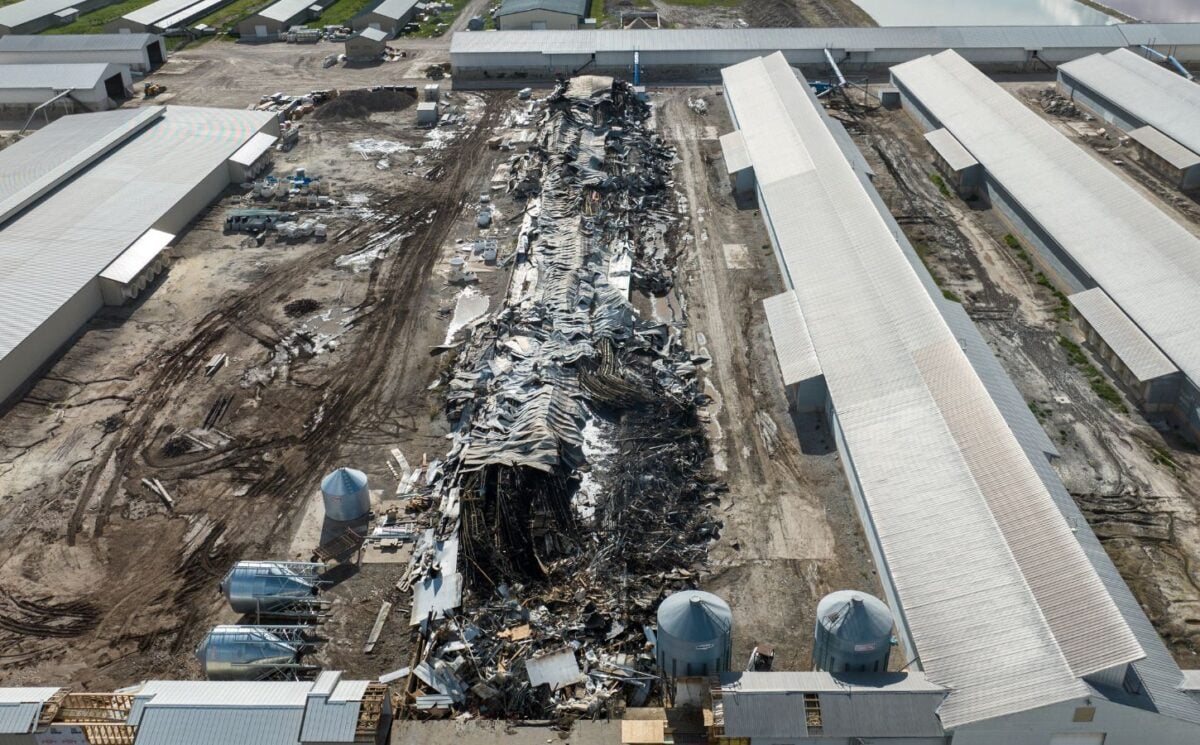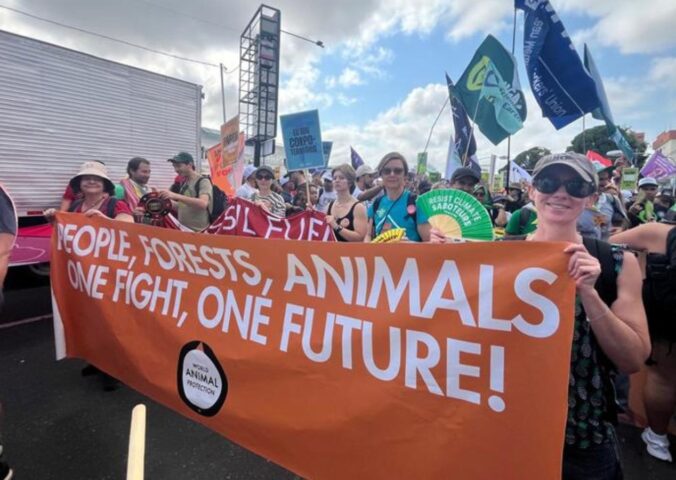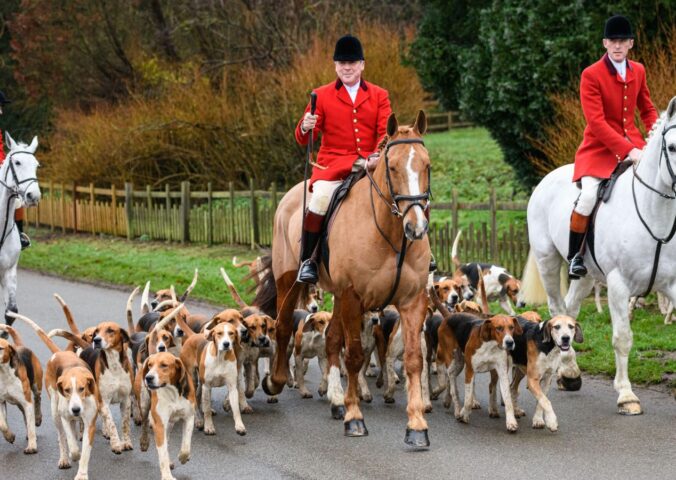*Warning: this article contains images that some might find distressing*
In the last two weeks, barn fires have ravaged two animal farms. One fire, at an Illinois egg farm on May 29, killed an estimated 1.2 million “egg laying” hens. The second, at another egg farm in California the following day, took place in a barn that was, thankfully, empty at the time.
At first glance, it would be reasonable to assume these fires were nothing more than freak accidents. Fires happen, they’re often no-one’s fault, and many people may see the news reports and reason that animals burning to death are just tragic anomalies, a necessary evil in a system built to feed us.
But these fires increasingly seem to be part of an ever more tangible pattern. It’s becoming apparent that our animal farming system is built in a way that makes fires not just accidents, but inevitabilities. Animals should never be in farms in the first place. And locking them up in them, sometimes by their millions, is not only causing huge suffering and desecrating the planet, but it’s also creating perfect conditions for fires that subject animals to one of the most painful possible deaths. Barn fires have become part and parcel in the broken system of animal agriculture, and the problem is getting worse.
The ‘worst death imaginable’
Animal Welfare Institute (AWI) is a Washington DC-based nonprofit that’s been documenting barn fires since 2013. It estimates that, in the last decade, more than eight million animals have been killed. Birds, pigs, goats, horses, cows, rabbits, alpacas, dogs, cats, llamas, and more are included in this figure. Any animal farmed by humans is at risk. Exact annual statistics are hard to estimate, and farms are not required to report the death counts of animals who die in fires. On average, though, the number of animals killed around the world in barn fires each year is in the hundreds of thousands.
“Barn fires are a serious problem that not many people have heard about,” Allie Granger, senior policy associate for AWI’s farmed animal program and leader of the barn fires campaign, tells Plant Based News (PBN). “The number of animals that are impacted is enormous and their manner of death is probably one of the worst imaginable.”
The vast majority of animals killed are chickens. They are by far the most farmed land animal, and represent around 98 percent of barn fire deaths. Due to the fact they are small in size, intensive farms can house huge numbers of birds at a time. Many farms, including the Illinois egg farm, house more than a million in one barn. When one fire happens, its death toll can therefore be devastating.
Some animals die of smoke inhalation. But those are the luckier ones. Animals are already suffering terribly in farms, and are more often than not locked up in crates, cramped together, and often immobile due to injuries. When flames spread, animals have no chance of avoiding them. The fire gets to them while they’re still alive, incinerating them in their cages. Some survive being burnt alive, and the only medical assistance they’ll receive is to be put down hours later.
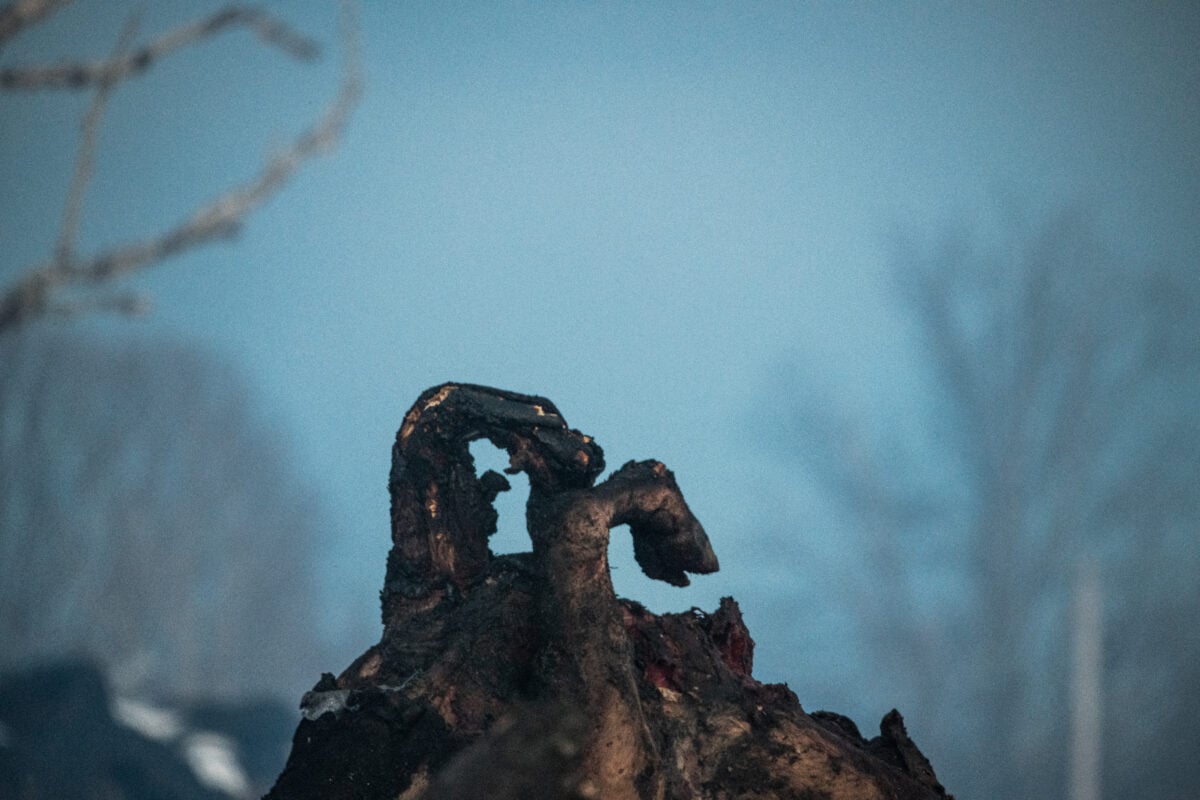
Barn fires mostly start because of malfunctioning heating or electrical equipment. This means that fires are a particular problem in colder countries and states, and they also tend to happen in winter. Once the fires have started, they spread very easily in farms. Barns are often full of flammable materials like hay, dust, and gasses like methane. Farmers are also often under no obligation to have fire safety measures like sprinklers and emergency exits for animals, and mostly choose not to install these due to costs. “Legal protections for farmed animals—in terms of fire safety and prevention, specifically—are extremely limited,” says Granger. “This is unsurprising given the lack of protection afforded to farmed animals, both in general and compared to other classes of animals. There are no federal laws in the US specifically designed to protect farmed animals from barn fires.”
A growing threat
While barn fires are allowed to continue unchecked, the number of animals being killed is increasing. According to the AWI’s count, the average number of animals dying annually was over 748,000 in the time period 2018-2021. This is up from 552,000 between 2013 and 2017.
Barn fires are a growing problem because industrial agriculture is a growing problem. As each year goes by, the number of animals being bred and raised for food worldwide increases by around a billion. The exact number of land animals we kill each year is therefore hard to pinpoint, but the latest figure estimates that around 92 billion are used in our food system each year. The vast majority of these animals are kept in cramped and torturous conditions in factory farms. “The issue of barn fires and the death toll they have caused is just one of the many ramifications of how animal agriculture has evolved in this country,” says Granger. “We have reached a point where confining tens, if not hundreds, of thousands of animals in massive buildings without safety measures in place is not only considered acceptable, but increasingly the norm. All signs point to this trend continuing, and we fear the dire consequences animals will continue to face as a result.”
In the US, 99 percent of animals are intensively farmed, and it’s 85 percent in the UK. Mega farms, which can house more than a million animals at a time, are dotted all over the place, and more are being built all the time. As these farms aren’t built with any sort of fire safety measures in mind, and more and more animals are being kept in a single one at any given time, it’s very likely that the coming years will see many more million animals being killed as more and more farms go up in flames around the world.
Harder to ignore
But despite the huge and growing death toll, barn fires still aren’t really spoken out (aside from the odd news report that focuses on the economic loss of the farmer). Most people abhor the idea of animals being treated badly, so why are they turning a blind eye to them being burned alive in their millions?
Humans have largely taught themselves to not think about animals in our food system. While they dote on their “pets” and loudly criticize dog meat, bullfighting, and other animal abuses happening in other countries, they try their best not to think about the countless animals being tortured for their dinner.
But barn fires are becoming harder to ignore. These fires aren’t just hurting animals, they’re impacting human communities as well. Farming animals is already terrible for the planet, contributing to a huge amount of pollution without the added impact of smoke. And barn fires force humans to breathe in the toxic fumes of an industry they’ve spent their lives trying desperately not to think about.
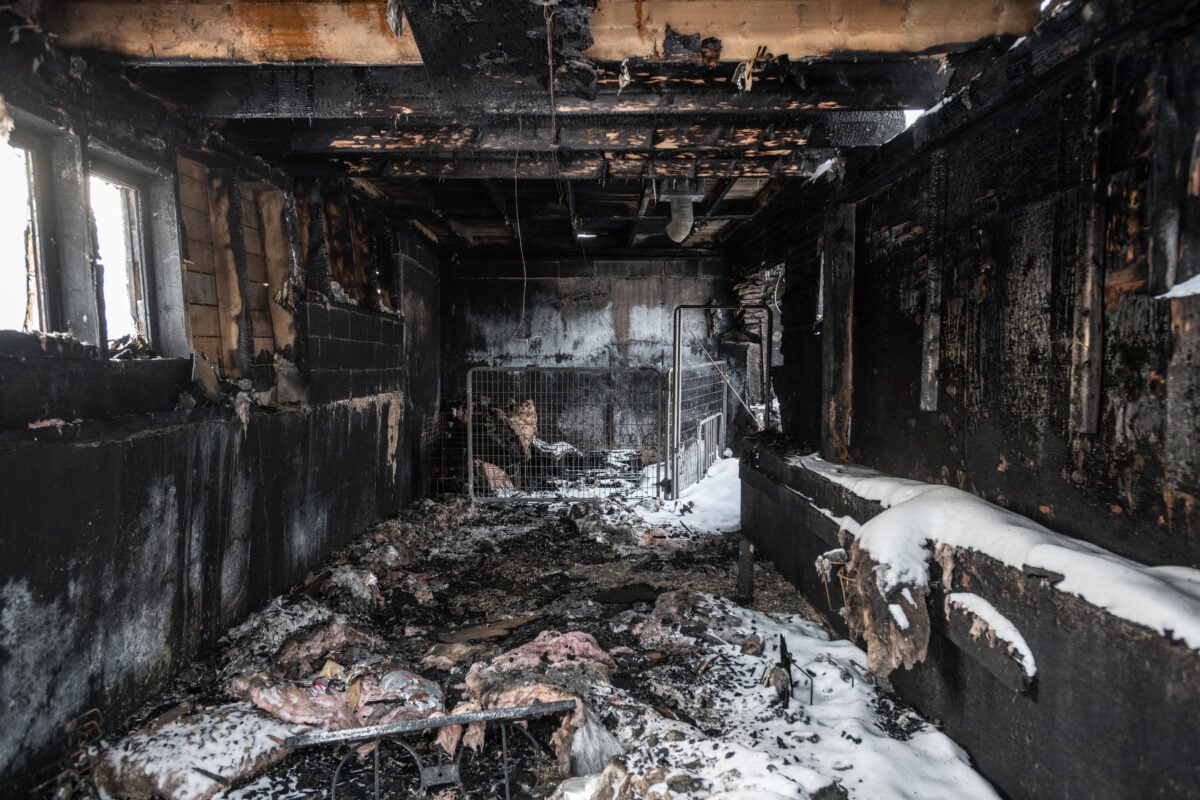
Animal farms are unnatural. They’re full of a huge amount of synthetic materials that produce highly toxic chemicals when they burn. Last year, a Texas dairy farm barn fire caused by a methane explosion killed 18,000 cows. The explosion emitted a plume of black smoke into the air that could be seen for miles, and witnesses said that the streets looked like they were filled with fog in its wake. Animal agriculture thrives in secrecy, but barn fires are bringing its reality – coughing and spluttering – to our front doors.
A move away from animal agriculture is essential
Barn fires are being seen by many as yet another reminder of the horrific cruelty inherent in the animal agriculture industry. Our farming system is rife with abuse of animals generally, not just those who die in fires, and multiple investigations have detailed animals being mutilated, starved, injured, burned, beaten, and boiled alive. If animals weren’t farmed against their will and trapped in these conditions in the first place, they wouldn’t be at risk of yet another type of painful death.
While increased fire safety measures on farms would be a welcome stepping stone, many animal organizations believe that a move away from farming is the only move forward. Viva! is the UK’s leading vegan campaigning charity. It has conducted multiple undercover investigations into the reality of our farming system. “It is abhorrent that so many sentient beings are being kept indoors in filthy conditions where they are never allowed to see the sun or graze outdoors,” Laura Hellwig, Viva!’s managing director, tells PBN. “This surprisingly common practice is indicative of all that is wrong with modern farming and animal agriculture.”
The animal agriculture industry will have you believe that this sort of farming is necessary to feed the human population, but it’s actually a hugely unsustainable industry that’s one of the leading drivers of the climate crisis and causal of a significant amount of human diseases. Studies have shown that a shift to a plant-based food system would feed an additional four billion people, free up 75 percent of agricultural land, and drastically reduce greenhouse gas emissions. Barn fires are not a necessary evil, but an added horror on an ailing, pointless, and deeply catastrophic industry.
If we are to make sure barn fires never happen, it logically follows that we need to stop subjecting animals to these conditions in the first place. “The number one thing you can do if you are concerned about barn fires is to stop eating meat, dairy, fish and eggs,” says Hellwig. “By going vegan, you reduce the demand for animal products, which in turn reduces production. If you can, educate those around you on the horrors of factory farming and encourage them to adopt a plant-based diet.”
